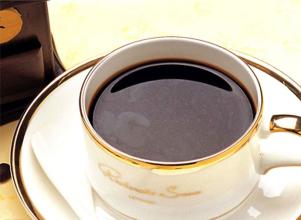Introduction to the characteristics of Coffee Bean Fire Fenghuang Manor in Costa Rica
Introduction to the characteristics of Coffee Bean Fire Fenghuang Manor in Costa Rica
Costa Rica's coffee industry, originally controlled by the Costa Rican Coffee Industry Company (ICAFE), has been taken over by the official Coffee Committee (Oficinale Cafe). Among the exported coffee, those products that are considered to be of substandard quality are colored with blue vegetable dyes and then transferred back to China for sale. Coffee consumed domestically (dyed blue or undyed) accounts for about 10% of total production, and local per capita coffee consumption is twice as good as that of Italy or the United States. Costa Rican coffee is called "extra hard beans". This kind of coffee can grow at an altitude of more than 1500 meters. Altitude has always been a problem for coffee growers. The higher the altitude, the better the coffee beans, not only because the higher altitude can increase the acidity of the coffee beans and thus increase the flavor, but also because the night temperature at the higher altitude is lower, which can make the trees grow slowly, thus making the coffee beans have a stronger flavor. In addition, due to the high altitude drop caused by sufficient rainfall, is also very beneficial to the growth of coffee trees. However, while there are many advantages to growing coffee at higher elevations, the resulting additional transport costs must be taken into account, which is likely to make coffee production unprofitable. The coffee industry in Costa Rica has adopted new technologies to increase efficiency, including the use of "electric eyes" to select beans and identify coffee beans of irregular size.
Generally speaking, a large amount of water is used in the post-processing of the picked coffee fruit, but the advanced production equipment in Costa Rica saves the use of water resources to the greatest extent, and a circulating filter is used to treat the waste water from washing coffee beans. let the waste water be purified into clean water to prevent pollution of the local soil environment.
After peeling, the peel and pulp of the coffee fruit are recovered as feed for livestock, or converted into organic fertilizer, as well as coffee bean dryer fuel. It can be said that in every process of coffee production, Costa Rica complies with the requirements of maintaining the natural environment.
Among the many excellent producing areas in Costa Rica, there is a famous producing area that stands out-Tarazu (Tarrazu), also known as Tarasu. Tarazhu is very famous in the world of boutique coffee and is one of the major coffee producing areas in the world. In the 2014 COE competition, of the 23 beans on the list, 17 came from Tarasu. Tarasu is located in the fertile volcanic region of Central America, which has a humid climate and fertile volcanic soil, abundant rainfall throughout the year, high altitude, and dense forest natural shade, providing a unique growth environment for coffee growth. Pesticides or artificial fertilizers are not used in the planting process. Nearly 95% of the coffee beans produced in Tarazhu Alpine are very hard beans (SHB), which generally grow above 1500 meters above sea level.
At present, the Tarazhu Cooperative has 26 member estates. Among them, Raminita Manor, which is one of the most famous coffee farms in Tarazu. La Minita produces about 1 million pounds of coffee beans a year, and after the entire estate produces coffee beans that are carefully selected to remove defects, only 15 per cent of the coffee beans can bear the mark of the Laminita estate, while the rest enter the coffee market. But the prices of these coffees entering the market are still higher than those of other beans produced in Central America. Raminita's strict management of all aspects of coffee production has established a world-class reputation and can be called a world-famous coffee farm.

Important Notice :
前街咖啡 FrontStreet Coffee has moved to new addredd:
FrontStreet Coffee Address: 315,Donghua East Road,GuangZhou
Tel:020 38364473
- Prev

Description of roasting degree curve of Yejiaxuefei coffee beans introduction to the origin of sour manor
Yega Chuefei Coffee Bean Baking degree Curve Flavor description of sour Manor Origin introduction Yega Xuefei is divided into two categories according to the different ways of handling raw coffee beans: category An is washed, and the grade standard is set by the American Fine Coffee Association (SCAA), which is divided into Gr-1 and Gr-2, the smaller the Arabic numeral, the higher the grade, the distinct style of G1 Yega Chuefei, the flavor of citrus and floral flavor in the coffee liquid.
- Next

Costa Rica Black Honey treatment Water content Coffee Bean Flavor description Grinding scale Variety treatment
Costa Rican Black Honey treats Water content Coffee Bean Flavor description Grinding scale Variety treatment method Costa Rican Coffee has always been considered to be the perfect type of classic flavor, balanced, clean and mild is its keynote. San Juan Youzhuang, a processing plant in the western valley of Herba é, comes from a famous tangerine county (Naranjo) producing area with excellent natural geographical conditions and excellent regional planting tube.
Related
- Detailed explanation of Jadeite planting Land in Panamanian Jadeite Manor introduction to the grading system of Jadeite competitive bidding, Red bid, Green bid and Rose Summer
- Story of Coffee planting in Brenka region of Costa Rica Stonehenge Manor anaerobic heavy honey treatment of flavor mouth
- What's on the barrel of Blue Mountain Coffee beans?
- Can American coffee also pull flowers? How to use hot American style to pull out a good-looking pattern?
- Can you make a cold extract with coffee beans? What is the right proportion for cold-extracted coffee formula?
- Indonesian PWN Gold Mandrine Coffee Origin Features Flavor How to Chong? Mandolin coffee is American.
- A brief introduction to the flavor characteristics of Brazilian yellow bourbon coffee beans
- What is the effect of different water quality on the flavor of cold-extracted coffee? What kind of water is best for brewing coffee?
- Why do you think of Rose Summer whenever you mention Panamanian coffee?
- Introduction to the characteristics of authentic blue mountain coffee bean producing areas? What is the CIB Coffee Authority in Jamaica?

